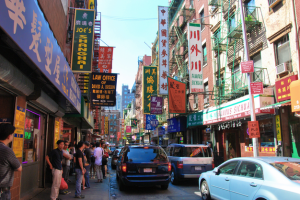Since the beginning of time, languages have been disappearing, fading into obscurity as time, war and various other factors make them obsolete. Often, people transition out of one language into another, either by choice or because they were forced to, which linguists refer to as a “language shift”. Look, for instance, at the Gaelic languages spoken in Ireland, Scotland, the Isle of Man and to a lesser extent Canada. During the 19th century, these languages were viewed as “backward”, serving as an obstacle for advancement in the English-speaking British Empire. Gaelic-speaking families discouraged the use of the language among their children, until it looked like the Celtic languages would fade into obscurity. During the 20th century, however, something amazing happened: a revival in Celtic nationalism saved these languages from extinction, and are now widely heard once again.
However, not all languages are so lucky, going extinct as their last native speakers die out. According to UNESCO, about half of the world’s 6,500 languages are “critically endangered”, and may fade away before the end of the 21st century. I recently came across an interesting article about one of the places in the world where so many languages have gone to die: New York City. Indeed, New York has been a linguistically and culturally diverse place since its founding nearly 400 years ago; when a French Jesuit priest visited New York in the 1640s, back when it was a remote Dutch trading post called “New Amsterdam”, he reported a total of 18 different languages spoken amongst the settlements’ several hundred inhabitants. Nowadays, there are an estimated 800 different languages spoken in New York City’s 5 boroughs, including many that are at risk of fading away.
When we think of “endangered” languages, it’s easy to imagine some primitive dialect spoken in the remote wilderness of Papua New Guinea or the Caucasus Mountains. However, even more endangered languages can be found in a place such as New York City, particularly the borough of Queens, considered to be the most diverse place in the world. Jackson Heights, for instance, is home to a large Nepalese community, where immigrants congregate together to preserve their language and culture. Many of them live within a few blocks of each other, and meet regularly for various social events where they chat away in their endangered dialect. And in a place as diverse as Queens, many of these immigrants grow up speaking a variety of languages so that they can communicate with their neighbors.
Recently, two linguists and a performance poet set up the Endangered Language Alliance, an urban initiative for endangered language research and conversation. There have been several languages who died in the streets of the Empire City over the years, and countless others who are in danger of following suit. Many communities leave their homeland entirely behind to settle in New York. The Gottscheers, for instance, are an ethnic group from what is now Slovenia, descended from ethnic Germans who settled in the area in the Middle Ages. Surrounded by Slavic-speaking populations, the Gottscheers were isolated from other Germanic populations, retaining their own variety of language that’s now unintelligible to German speakers. In the aftermath of World War II, the last speakers of this language ended up in Queens.
Recently, the Endangered Language Alliance have been recording obscure languages they found in New York, such as Garifuna from Central America or Mamuju from Indonesia, recordings which could very well be the first ever digital documents of these languages being spoken. Being the last speaker of a language can be pretty lonely; you have nobody to talk to, no way to write it down and a lot of the cultural and historical knowledge you have doesn’t translate so easily into English.

